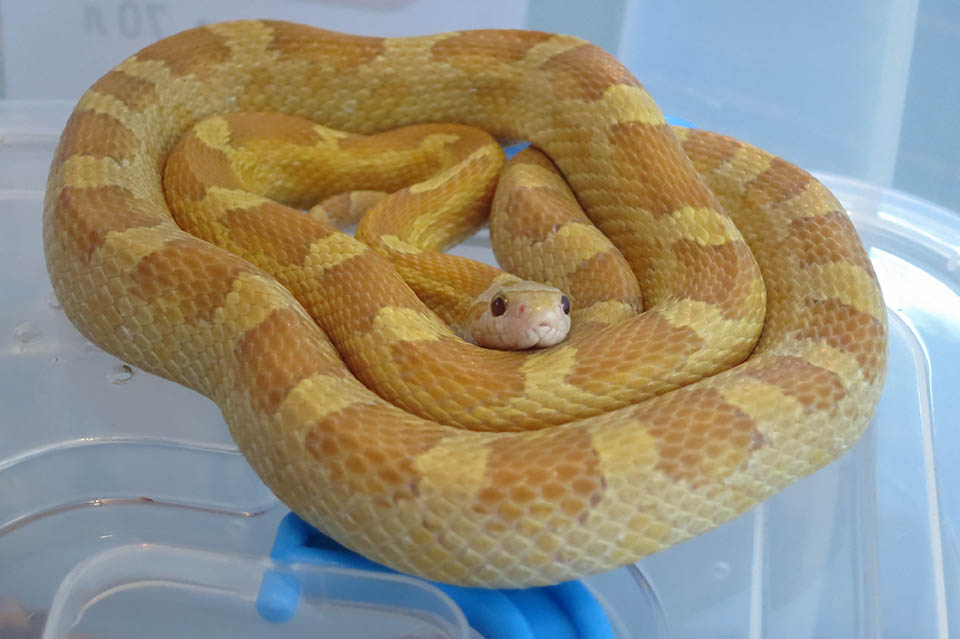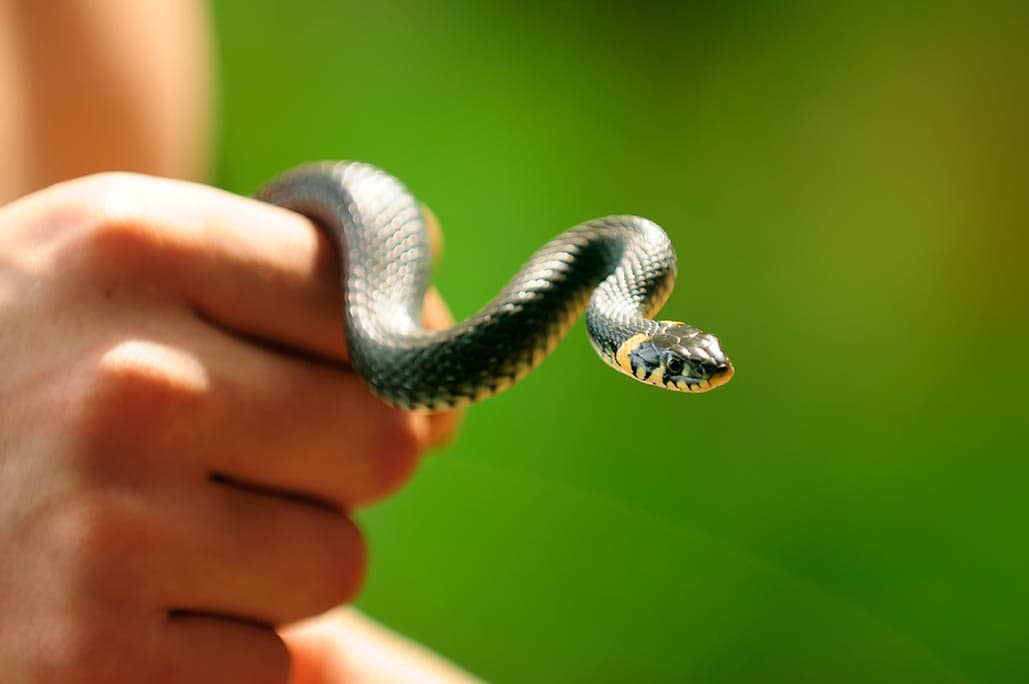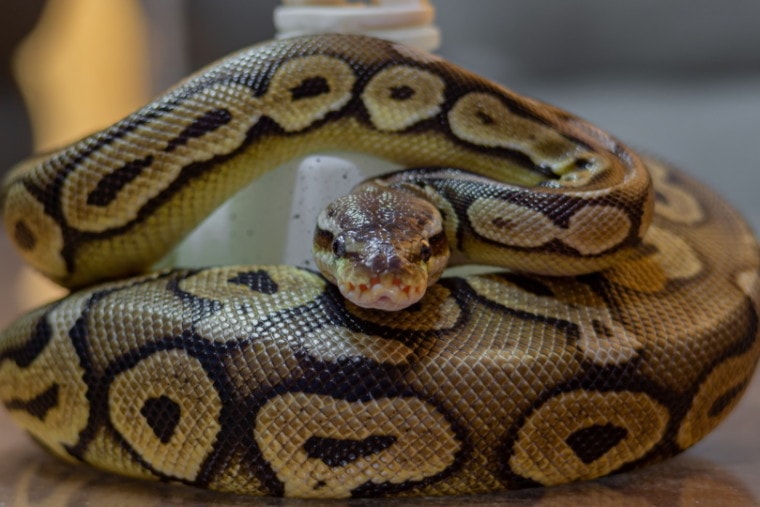
There’s a common misconception that ball pythons are arboreal or semi-arboreal, meaning tree-dwelling. However, ball pythons are actually terrestrial and are in their element when moving along the grounds of wild grasslands.
Some people may spot ball pythons resting or hunting small birds on trees. However, this isn’t typical ball python behavior. Ball pythons in trees are often small and young. Larger adult ball pythons will stick to living on the ground and have little reason to climb up trees.
Ball pythons are docile and quiet pets. Therefore, it’s important to know how to care for them because it can be difficult to tell if their needs are unmet. We’ll cover the basic enclosure needs for ball pythons and answer frequently asked questions so that you can create the best habitat for your beloved pet.
 What Is the Best Environment for a Ball Python?
What Is the Best Environment for a Ball Python?
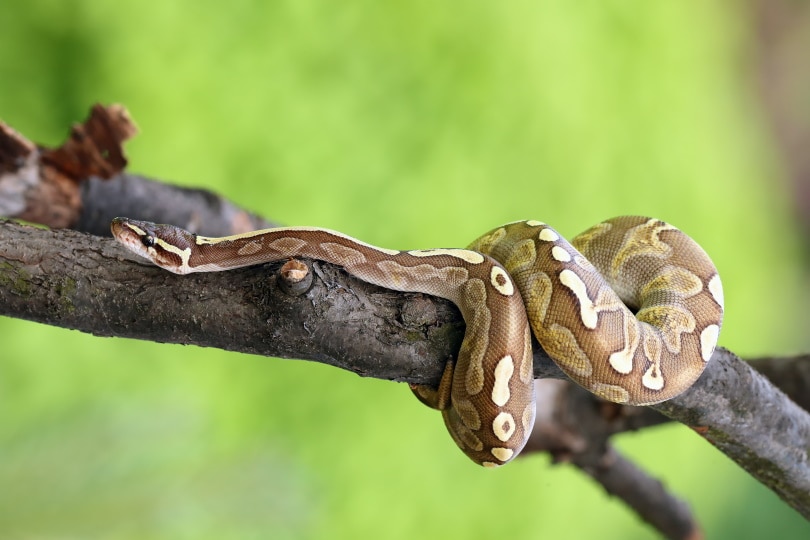
Ball pythons, or royal pythons, are native to West and Central Africa. They live in grasslands and open forests. Since they are terrestrial pythons, they spend most of their time on the ground or burrowed underground.
These pythons also prefer climates that have 55%-60% humidity. This humidity range helps maintain healthy skin moisture and promotes ideal respiratory conditions.
Temperature is also vital to a ball python because they are ectotherms. They prefer temperatures between 75°F-85°F.
In the wild, ball pythons eat small rodents and birds, amphibians, and fish. They are ambush predators, so they do best in areas with many pits where they can hide and hunt for their prey by tracking their heat signals.
 What Should I Put in My Ball Python Tank?
What Should I Put in My Ball Python Tank?
It’s best to mimic the ball python’s natural habitat so that they can thrive and live stress-free as pets.
Type of Tank
The first item to consider is the ball python’s tank. In general, a ball python needs ample space, so the tank should be between 30-40 gallons. There are several different types of tanks you can purchase. The most common types of tanks are glass tanks and plastic or acrylic tanks.
Glass tanks are the most popular type of tanks and are widely available. They provide a clear view of your pet and its habitat. However, they don’t retain heat very well.
Plastic and acrylic tanks are also popular choices. They tend to retain heat better than glass tanks, but they can also scratch more easily than glass. They may also lose clear visibility over time.
Lighting
Next, you must consider lighting. Since ball pythons are nocturnal, they don’t require any specialized lighting. A small ambient light with moderate intensity will suffice, and make sure that it isn’t too bright. You can set up the light with a timer so that the Ball Python receives a basic light cycle of day and night.
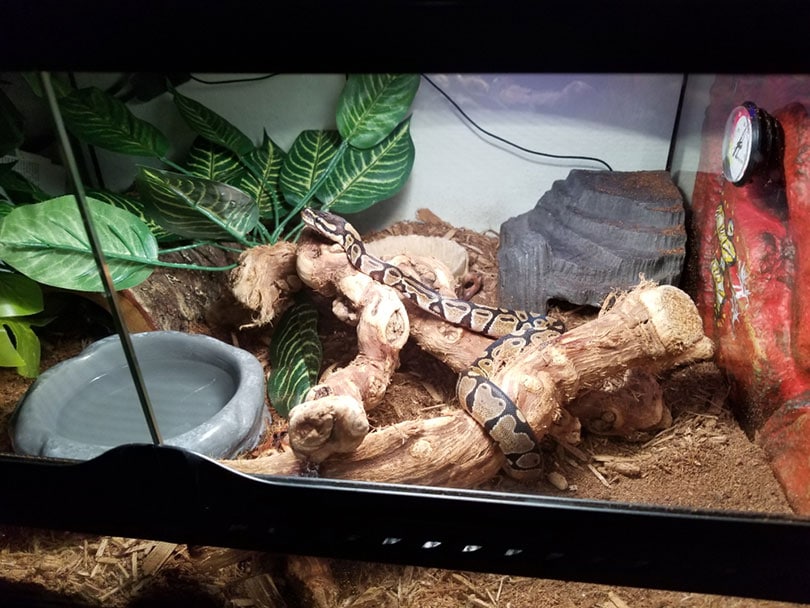
Heat Source
Keeping the tank well-heated is also an essential factor. There are three main ways you can heat a tank:
The type of heat source depends on personal preference, so don’t hesitate to experiment to see which option works best for you. The most important thing is to create a thermal gradient with the correct temperature.
Set up your heat source on one side of the tank and set the temperature at about 95°F during the daytime. The opposite side of the tank should be between 70°F -80°F. As long as temperatures don’t dip below 68°F, you can turn off the heat source at night. Also, make sure to have a thermometer at these spots to monitor temperature levels.
Humidity
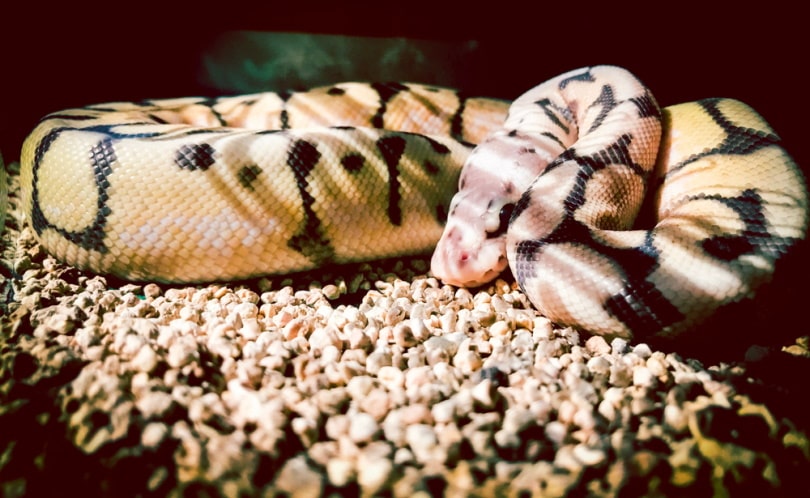
An ideal level of humidity will greatly benefit a ball python’s health. If an environment is too dry, the ball python will have difficulty with shedding. If the environment is too humid, these snakes can catch different skin diseases.
Ball pythons will do well in habitats with humidity levels that range between 50%-60%. You can raise humidity by misting the tank or leaving a large water dish inside the enclosure. If the tank is too humid, you can try to increase the tank’s ventilation or reduce the size of the water dish.
Python Substrates
Substrates and bedding can help absorb moisture and odor. There are many kinds of substrates you can put in a ball python’s enclosure:
The type of substrate that you use will mainly depend on your personal preferences. Some options are more affordable than others, and some will retain moisture and balance out humidity levels better than others.
Just avoid pine and cedar shavings. These types of substrates have oils that can irritate your ball python’s skin.
Hiding Areas and Accessories
Since ball pythons are ambush predators, they naturally like to hide. Therefore, make sure to include several hiding spots for your ball python. You can add hideouts and plastic or natural plants. Ball pythons also like to burrow, so make sure that there’s an ample amount of substrate in the tank for them to dig through.
Lastly, make sure to include a water dish. Ball pythons sometimes like to soak in water, so if you’d like, you can purchase a dish that’s big enough for them to lay in.
 Final Thoughts
Final Thoughts
Ball pythons are great first pets for beginner snake owners because of their calm personalities and relatively minimal care requirements.
Just remember that ball pythons are terrestrial. They aren’t arboreal, so you don’t need to fill their enclosures with branches or other items they can climb. Instead, provide ample hiding spots in the ground and nice substrates for them to burrow under.
There are plenty of accessories and functional décor that you can use. Have fun and be creative with setting up your ball python’s enclosure, and it will love you for filling its home with everything that it likes and needs.
Featured Image Credit: TKBackyard, Shutterstock
 What Is the Best Environment for a Ball Python?
What Is the Best Environment for a Ball Python? What Should I Put in My Ball Python Tank?
What Should I Put in My Ball Python Tank? Final Thoughts
Final Thoughts

